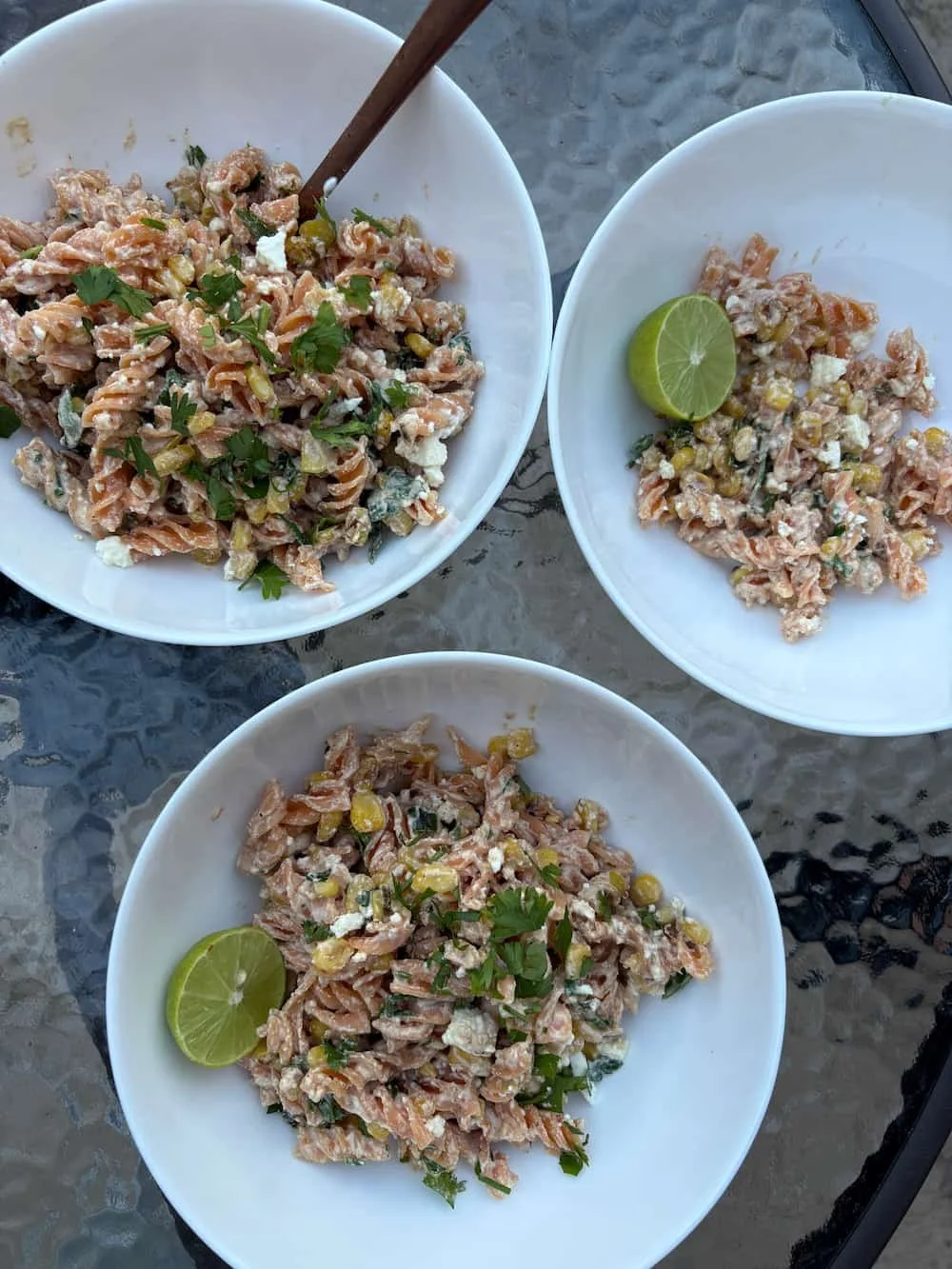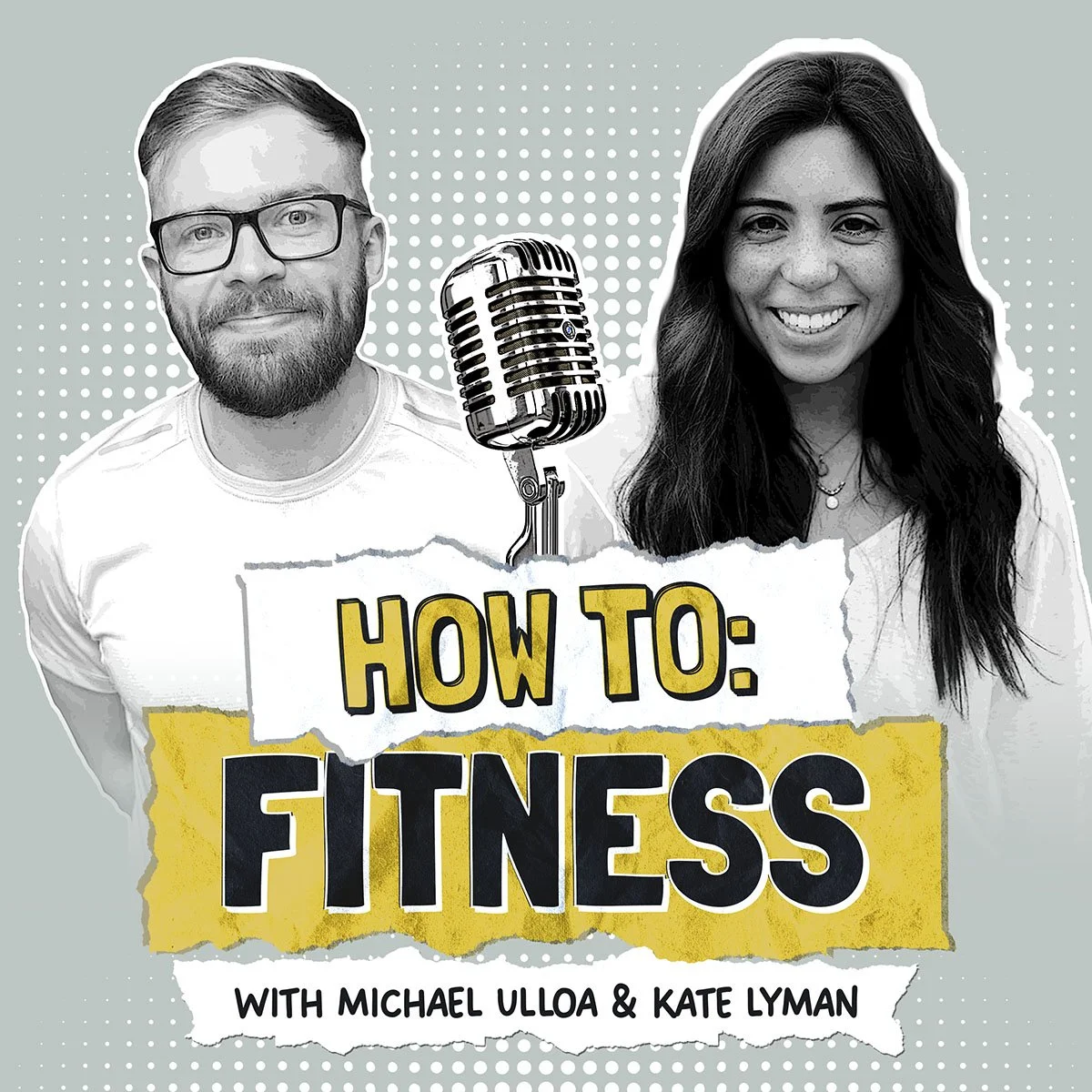
from the blog
Join our weekly newsletter & stay up to date with the latest posts.
High-Protein Street Corn Pasta Salad: Macro-Friendly Mexican Food
This creamy, tangy, high-protein street corn pasta salad puts a macro-friendly twist on Mexican esquites. Packed with fiber and protein, it’s quick to make, perfect for meal prep, and family-approved (even toddler-approved!). Try this easy, flavourful recipe with flexible spices and toppings for a balanced dish that keeps you full and energised.
GLP-1 Medications Beyond Weight Loss: Habits, Health, and Mindset
GLP-1s reduce food noise and support weight loss, but lifestyle still matters. Learn how to protect your health, build habits, and navigate the mental side while using them.
Nutrition Tips For Teachers: Back-To-School Meal Ideas
If you're a teacher running on caffeine, granola bars, and sheer willpower, you’re not alone. Between lesson planning, grading, classroom chaos, and trying to sneak in a bathroom break, your own nutrition is falls low on your list. But here’s the thing: your energy, focus, and even your mood are directly impacted by what (and when) you eat. And, as busy as you are, you do still have to eat!
The Complicated Truth About GLP-1 Medications: Benefits, Risks, and Everything In Between
GLP-1 medications like Ozempic, Wegovy, and Mounjaro can improve blood sugar, reduce cardiovascular risk, and help with weight loss—but they’re not without side effects. From nausea and under-fueling to cultural stigma and equity concerns, the truth about GLP-1s is complicated. Here’s what you need to know about their benefits, risks, and why nuance matters.
Fasted Cardio, Protein vs. Fiber, and the Truth About Mouth Taping
Fasted cardio isn’t a magic fat-loss tool. While you may burn more fat during the workout, the difference disappears over 24 hours — unless you’re an endurance athlete training specifically to improve fat utilization. Intermittent fasting is generally not recommended while breastfeeding, especially early postpartum, when nutrient and energy needs are high to protect milk supply. Mouth taping has limited evidence for specific conditions like mild sleep apnea but offers no proven broad health benefits. Protein and fiber aren’t competitors; both are essential for satiety, health, and performance, and most people benefit from eating more of each! If you’re hungry despite eating “healthy,” add more protein or healthy fats and consider higher-volume foods. Workouts under 45 minutes can be highly effective if they’re well-structured and purposeful. The key takeaway: skip the absolutes and choose what works best for your goals, lifestyle, and body.
Why We’re So Obsessed with Ancestral Diets (and Why It’s Misleading)
Have influencers convinced you that modern food is toxic, and that the only way to be healthy is to eat like your ancestors?
I explore the myths behind these trends, what actual science says about early human diets, and why “natural” doesn’t always mean better. Plus, we break down food fears, additives, and the realities of our modern food environment.
The Environmental Cost Of What We Eat: Myths, Facts, And Swaps
What we eat can actually say a lot about our relationship with the planet. But when it comes to sustainability, there’s a lot of noise out there. Is going vegan the answer? Is almond milk ruining the environment? Does eating local really make a difference? In a recent episode of our podcast, How to: Fitness, we delve into this topic and get curious about the impact of our food choices on the environment.
Nutrition considerations for trans athletes: supporting performance beyond the binary
Most sports nutrition advice assumes a cisgender body—but that doesn’t work for trans athletes. This guide offers personalized, affirming nutrition strategies that support performance, recovery, and body autonomy, with insights on hormone therapy, body composition, and fueling without the binary.
3 Easy Chicken Salad Recipes For Macro-Friendly Meal Prep
Chicken salad is hands down one of the easiest ways I add protein to my day and prep lunches that offer variety while also staying simple. It’s perfect for meal prep, packs well for on-the-go days, and can be eaten in so many ways - on toast, with crackers, in a wrap, or as part of an adult lunchable. It’s high in protein, super versatile, and endlessly customizable based on what you’ve got in the fridge.
3 Habits That Actually Support Your Health During Menopause
Menopause is a major physiological shift, period. For any woman going through the menopause transition, the bombardment of “solutions” and “hacks” can feel really overwhelming. But here’s the good news: navigating menopause probably doesn’t require overhauling your entire life, chasing endless biohacks, or spending your entire retirement fund on fancy supplements. Support matters—yes—and having a great care team is important. But more often than not, it’s not about doing more, more, more. It’s about doing what matters most.
5 Go-To Dinner Ideas For Busy Nights (From Nutrition Coaches Who Get It)
Having a list of “green light” meals that are tried and true options for you (and your family) and also meet your preferences, budget, and time constraints can eliminate decision fatigue and reduce information management -- especially at times when you’re feeling exceptionally exasperated.
While I can’t create that “green light” menu for you, I hope you can take some inspiration from our KLN coaches and our go-to green light dinner meals.
How Food Marketing Impacts your Food Choices
Food marketing isn’t just about selling products. It’s a multi-billion-dollar industry designed to shape what we eat, what we crave, and even how much we consume. And because it’s everywhere, it not only sways our buying patterns but also influences our eating behaviors in ways we don’t always realize.
But here’s the thing: when we understand these tactics, we can make more informed choices, think critically about the messages we’re being fed, and take back control in a world where marketing is everywhere. You can deep dive into this topic (and how it impacts you and your consumption!) in this podcast episode or keep reading for some of the key takeaways.
How to Take Creatine (And Everything Else You Need to Know About Supplementation)
We hear it’s the most researched supplement out there—but how much of what we say about creatine is actually evidence-based? If you’ve spent any time in fitness or nutrition spaces, you’ve probably heard the same few things about creatine repeated over and over again. It’s often presented as the gold standard of supplementation: safe, effective, and a must-have for anyone who lifts.
Debunking Detox Myths: What Your Body Really Needs When Detoxing
If you've spent any time in the wellness space, you've probably seen many bold claims about detoxes - from juice cleanses to special supplements, influencers and "detox specialists" promise that these methods will help flush toxins, boost metabolism, and even cure diseases. But do they actually work?
Creating a Dopamine-Boosting Menu When Motivation is Low
One part of our nutrition goals we often overlook is the inevitable fact that, at some point, our motivation will tank. When that happens, we often believe we have to rely on only willpower or wait until motivation comes back to feel “on track,” but the reality is that motivation will wane at times and, rather than waiting for it to reappear, this is a time when we can benefit from taking simple actions that help us rebuild momentum.
3 Underrated Strategies for Your Calorie Deficit
When it comes to pursuing a fat loss goal, we know there are two main necessities to successful fat loss: First, consistency in a calorie deficit. Second, adequate protein intake. These two necessities are our top priority, but they don’t encompass all of the strategies that help us make these actions possible. Today, I want to talk through three of the most underrated strategies that help us achieve that consistency and feel good during a calorie deficit so that our fat loss goals don’t come at the expense of our energy, workouts, recovery, or relationship with food.
Avoiding the ”All or Nothing” Mentality During the Holidays: 3 Essential Strategies
The holiday season often means packed calendars, filled with family gatherings, work parties, and festive get-togethers. Right now, we’re in the thick of it. But how do we approach these events without feeling either deprived or overly indulgent? How do we navigate our nutrition in a way that aligns with our goals instead of calling it quits and just “starting over in January?” Let’s talk about it…
Honey Mustard Dense Bean Salad: A High Fiber Recipe
If you’ve been on the internet recently you may have seen the popular trend of “dense bean salads.” In an online space where there are lots of questionable trends circulating, this is one that I can wholeheartedly get behind! The idea behind a “dense bean salad” is that it’s a recipe packed with ingredients that get better day by day as the ingredients marinate longer. This dense bean salad I’m sharing today is no exception. It’s flavorful, high in protein (with plant-based options available to boost protein without animal products!), high in fiber, and incredibly customizable.
















